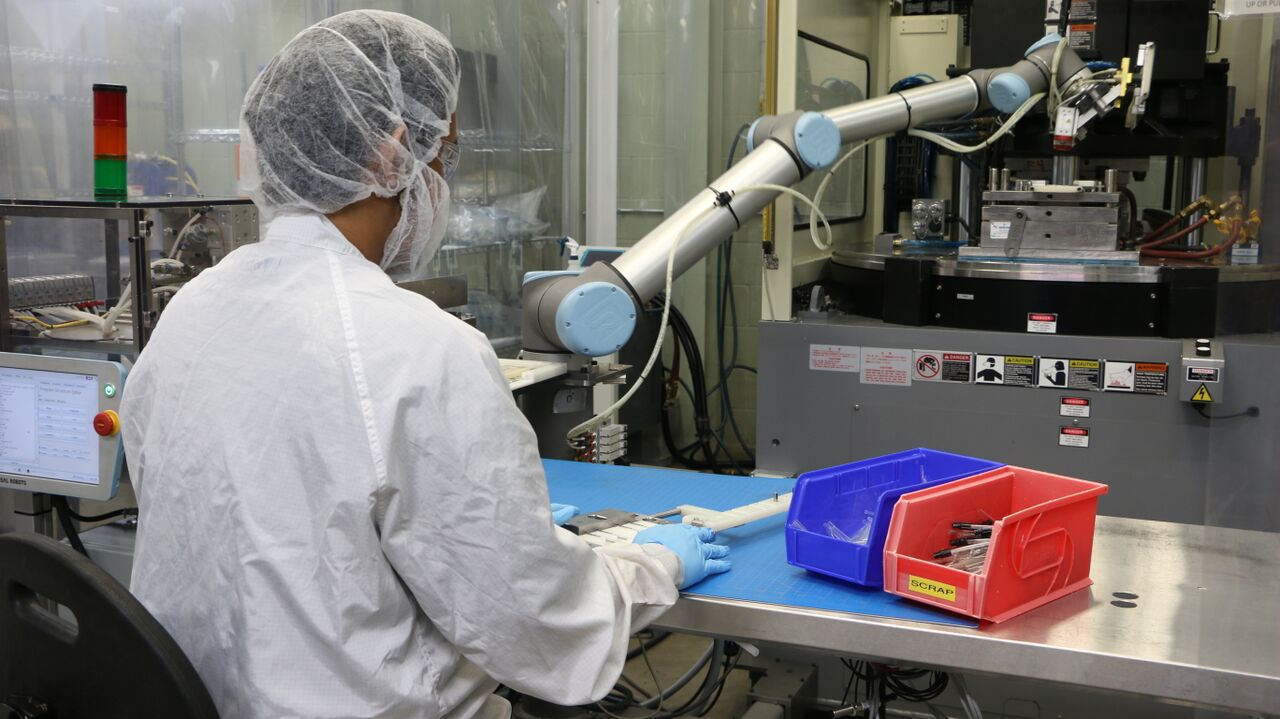As additive manufacturing technologies mature, automation has become a key concern for those seeking to advance the production rate of the technology. For small to medium-sized enterprises (SMEs) however, the capital outlay on robotic equipment can prove a barrier to investment in automation and further business development.
Danish collaborative arm manufacturer Universal Robots is seeking to challenge the preconceptions of introducing automation at SMEs.
The rise of robot-human collaboration
Universal Robots specializes in the development of collaborative robots (cobots). The current range includes three arms suited to the management of rising payloads: 3kg, 5kg and 10kg, and weighing 11kg, 20.6 kg and 33.5 kg respectively. The footprint of these arms is also no more than Ø 190 mm, making them a suitable option for compact workspaces.
As the name suggests, cobots are made to work alongside humans in a production environment. Universal Robots’ devices are certified for use alongside operators without the need for a safety barrier. Force-sensing technology means that when contact is made, Universal Robot arms automatically freeze, avoiding the threat of damage.

Furthermore, in certain instances, the robot arms may improve the safety of an industrial space by taking over the more dangerous machinery jobs and repetitively straining tasks performed by workers.
Canadian shelving manufacturer Etalex has employed a Universal Robots robotic arm on its factory floor. According to Etalex machine operator Richard Clive, “With the Universal Robot arm now I would say it’s at least a 100% safer. Before you had to put your hands close to the break press… and an accident could happen at any time. [Now] there’s no chance of anyone getting injured.”
Return on investment
Common tasks conducted by robot arms are, kitting (i.e. collecting multiple components to make a kit), degating (disassembly), pick and place, packaging and machine tending. Applications in 3D printing include management of a 3D printer farm, i.e. removing and replacing build plates, or sorting finished parts for delivery. The function can be easily programmed and redeployed to meet the specific needs of a given production line.
According to Universal Robots, their arms can be set up within 45 minutes of unboxing, and don’t require a specially trained machinist for operation. Sebrina Thompson, line lead at Universal Robots customer Scott Fetzer Electrical Group comments, “If you can program a smartphone, you can operate this robot.”
Furthermore, the company reports that the average return on investment of its arms is between 2 and 8 months.

According to Hal Blenkhorn, director of manufacturing for medical device manufacturer Tegra Medical, “We’ve had great financial success with the implementation of these robots, to the tune of what we’re seeing on average for the return on investment of between 3 and 6 months.”
“[…]we were looking at cost, ease of implementation, and ease of use and the Universal Robots seemed to have nailed it in all those areas.”
Universal Robots has compiled a guidebook on “How to Get Started with Cobots in 10 Easy Steps” in an eBook, free to download here.
For more information on robot arms and to get started with automation, visit Universal Robots.
Stay updated on the latest 3D printing news by subscribing to the 3D Printing Industry newsletter. Also, follow us on Twitter, and like us on Facebook.
Seeking a new career move? Search and post 3D Printing Jobs now through the specialist service on our website.
Featured image shows a cobot on the factory floor. Photo via Universal Robots.


